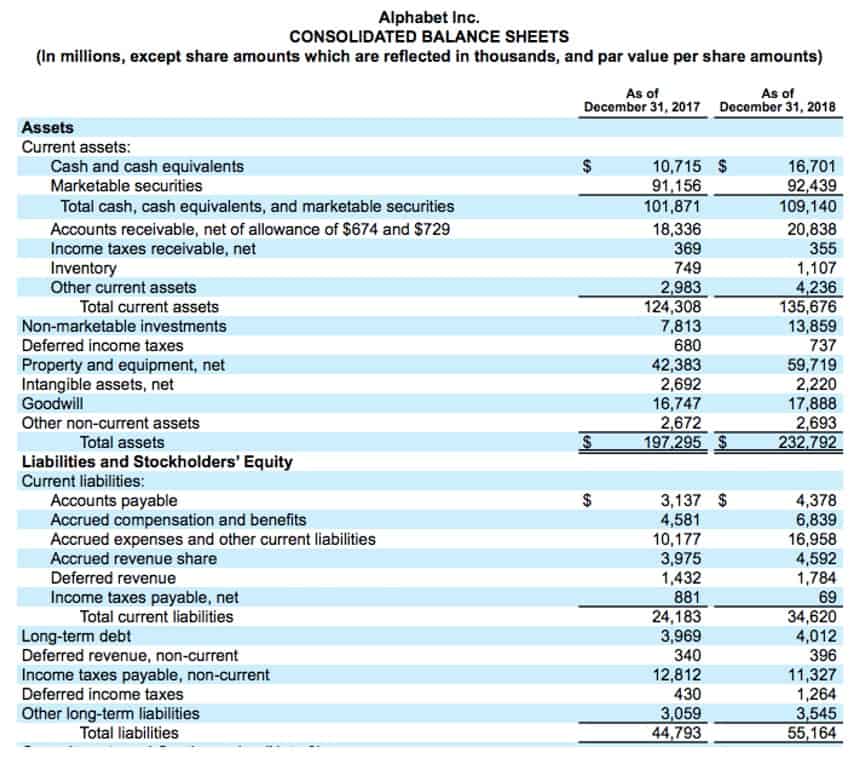Long-Term and the Debt-To-Equity Ratio

Municipal bonds are instruments of debt security issued by government organizations. Municipal bonds are often regarded as one of the least risky bond investments on the debt market. This is because they only have a little more risk than Treasury securities.
- Short term debt is debt which matures in less than one year whereas the current portion of long term debt is long term debt which is repayable within one year of the balance sheet.
- On the other hand, investing in long-term debt means putting in debt instruments having maturities of more than one year.
- Companies use amortization schedules and other expense tracking mechanisms to account for each of the debt instrument obligations they must repay over time with interest.
- These are loans that lack a specified asset as collateral and have a lower priority for repayment than other types of debt.
Double Entry Bookkeeping is here to provide you with free online information to help you learn and understand bookkeeping and introductory accounting. At the start of year 1 the balance of the debt is 5,000, after adding interest of 300 (5,000 x 6%) and making a repayment of 1,871 the balance of long term debt at the end of year 1 is 3,429. The current portion of long term debt at the end of year 1 is calculated as follows.
Long Term Debt (LTD)
For public investment, government organizations may issue either short- or long-term debt. These bonds receive ratings from rating agencies, and since companies back these, they carry a higher risk than municipal bonds and treasuries. To maintain continuity, financial statements are prepared in compliance with generally accepted accounting principles (GAAP). Among the various financial statements a company regularly publishes are balance sheets, income statements, and cash flow statements.
The value of the LTD will migrate to the current liabilities area of the balance sheet. This is when all or a portion of it becomes due within a year, which is commonly referred to as the current portion of the long-term debt. On the balance sheet, long-term debt is categorized as a non-current liability. Long-term debt (LTD) accounts may be split up into individual items or consolidated into one line item that includes several sorts of debt. In the notes to the financial statements the net amount of long term debt shown in the balance sheet would be explained as follows. For example, if the company has to pay $20,000 in payments for the year, the long-term debt amount decreases, and the CPLTD amount increases on the balance sheet for that amount.
- Municipal bonds are typically considered to be one of the debt market’s lowest risk bond investments with just slightly higher risk than Treasuries.
- As portions of long-term debt become due for payment, they are reclassified as short-term debt.
- The rationale is that the core drivers are identical, so it would be unreasonable to not combine the two or attempt to project them separately.
- This is when all or a portion of it becomes due within a year, which is commonly referred to as the current portion of the long-term debt.
- A company with a high level of leverage needs profits and revenue that are high enough to compensate for the additional debt they show on their balance sheet.
Financial obligations that have a repayment period of greater than one year are considered long-term debt. Included among these obligations are such things as long-term leases, traditional business financing loans, and company bond issues. The long-term portion of a bond payable is reported as a long-term liability. Because a bond typically covers many years, the majority of a bond payable is long term. The present value of a lease payment that extends past one year is a long-term liability. Deferred tax liabilities typically extend to future tax years, in which case they are considered a long-term liability.
Benefits of Long-term Debt You Should Know
The most important lines recorded on the balance sheet include cash, current assets, long-term assets, current liabilities, debt, long-term liabilities, and shareholders’ equity. Long-term liabilities are a useful tool for management analysis in the application of financial ratios. The current portion of long-term debt is separated out because it needs to be covered by liquid assets, such as cash.
This Bond ETF Is Having a Brutal Year. Time to Buy Long-Term Treasuries?
Debt capital expense efficiency on the income statement is often analyzed by comparing gross profit margin, operating profit margin, and net profit margin. Companies use amortization schedules and other expense tracking mechanisms to account for each of the debt instrument obligations they must repay over time with interest. In general, on the balance sheet, any cash inflows related to a long-term debt instrument will be reported as a debit to cash assets and a credit to the debt instrument. When a company receives the full principal for a long-term debt instrument, it is reported as a debit to cash and a credit to a long-term debt instrument. As a company pays back the debt, its short-term obligations will be notated each year with a debit to liabilities and a credit to assets.
It is critical to adjust the present profitability numbers for the economic cycle. A lot of money has been lost by people using peak earnings during boom times as a gauge of a company’s ability to repay its obligations. There are several tools that need to be used, but one of them is known as the debt-to-equity ratio.
Housing finance companies and startup ventures are leveraged on financial aspects and must take on debts regularly to meet basic business expenses. There are various long-term debts that the company can choose from for investing. Generally, these debts include central bank-backed treasuries and corporate and municipal bonds. Long-term debt can be beneficial if a company anticipates strong growth and ample profits permitting on-time debt repayments. Lenders collect only their due interest and do not participate in profit sharing among equity holders, making debt financing sometimes a preferred funding source.
Long-term debt definition
He is a CFA charterholder as well as holding FINRA Series 7, 55 & 63 licenses. He currently researches and teaches economic sociology and the social studies of finance at the Hebrew University in Jerusalem. whitepapers on accounting & cloud technology Thus, the company has $0.50 in long term debt (LTD) for each dollar of assets owned. Learn more about the above leverage ratios by clicking on each of them and reading detailed descriptions.
The process repeats until year 5 when the company has only $100,000 left under the current portion of LTD. In year 6, there are no current or non-current portions of the loan remaining. One of America’s most popular bond funds is in the doghouse for poor performance.
In this article, we look at what short/current long-term debt is and how it’s reported on a company’s balance sheet. When companies take on any kind of debt, they are creating financial leverage, which increases both the risk and the expected return on the company’s equity. Owners and managers of businesses will often use leverage to finance the purchase of assets, as it is cheaper than equity and does not dilute their percentage of ownership in the company. Interest from all types of debt obligations, short and long, are considered a business expense that can be deducted before paying taxes. Longer-term debt usually requires a slightly higher interest rate than shorter-term debt. However, a company has a longer amount of time to repay the principal with interest.
Recording the CPLTD
On the other hand, long-term debt can impose great financial strain on struggling companies and possibly lead to insolvency. To achieve a balanced capital structure, firms must analyze whether using debt, equity (stock), or both is feasible and suitable for their business. Financial leverage is a metric that shows how much a company uses debt to finance its operations. A company with a high level of leverage needs profits and revenue that are high enough to compensate for the additional debt they show on their balance sheet. The amount of long-term debt on a company’s balance sheet refers to money a company owes that it doesn’t expect to repay within the next 12 months.
They focus on the timeframe for repayment, including the interest component. The 0.5 LTD ratio implies that 50% of the company’s resources were financed by long term debt. Since the repayment of the securities embedded within the LTD line item each have different maturities, the repayments occur periodically rather than as a one-time, “lump sum” payment. The long term debt (LTD) line item is a consolidation of numerous debt securities with different maturity dates. The “Long Term Debt” line item is recorded in the liabilities section of the balance sheet and represents the borrowings of capital by a company.
The second reason debt is less expensive as a funding source stems from the fact interest payments are tax-deductible, thus reducing the net cost of borrowing. If you find the company’s working capital, and current ratio/quick ratios drastically low, this is is a sign of serious financial weakness. There may also be a portion of long-term debt shown in the short-term debt account. This may include any repayments due on long-term debts in addition to current short-term liabilities. Since the LTD ratio indicates the percentage of a company’s total assets funded by long-term financial borrowings, a lower ratio is generally perceived as better from a solvency standpoint (and vice versa). Long term debt (LTD) — as implied by the name — is characterized by a maturity date in excess of twelve months, so these financial obligations are placed in the non-current liabilities section.
Corporate bonds have higher default risks than Treasuries and municipals. Like governments and municipalities, corporations receive ratings from rating agencies that provide transparency about their risks. Rating agencies focus heavily on solvency ratios when analyzing and providing entity ratings. All corporate bonds with maturities greater than one year are considered long-term debt investments. Compared to Treasury and municipal bonds, corporate bonds are more susceptible to default. Corporations, like governments and municipalities, are given ratings by rating agencies.
Still, it can be a wise strategy to leverage the balance sheet to buy a competitor, then repay that debt over time using the cash generating engine created by combining both companies under one roof. Long-term debt is a financial obligation for which payments will be required after one year from the measurement date. This information is used by investors, creditors, and lenders when examining the long-term liquidity of a business. Companies frequently employ long-term debt to finance long-term expenditures like the purchase of equipment or fixed assets because they have a tendency to match the maturity of their assets and liabilities.




